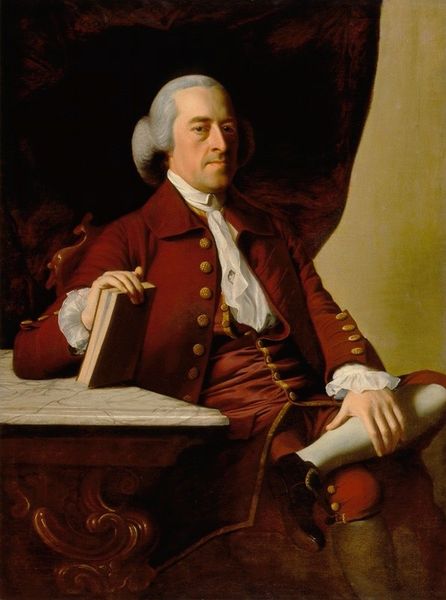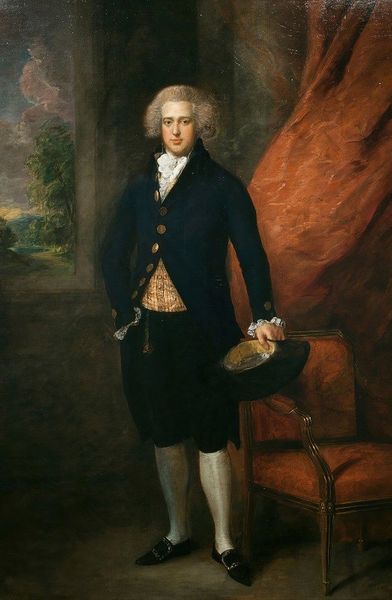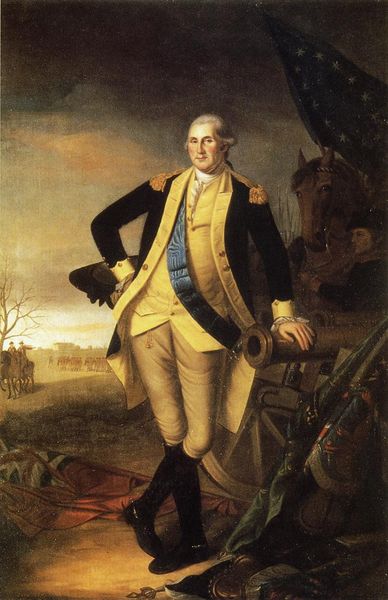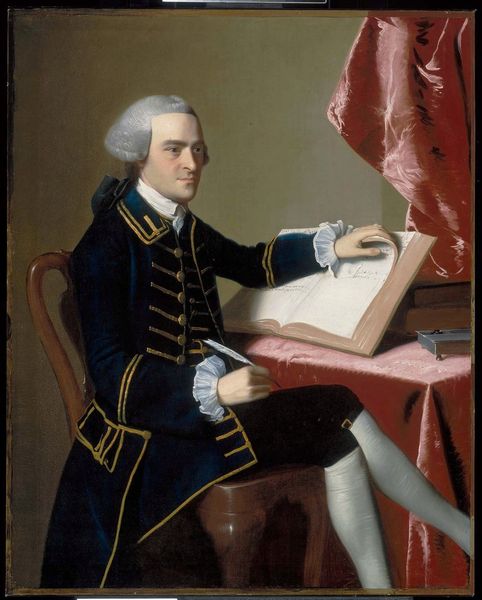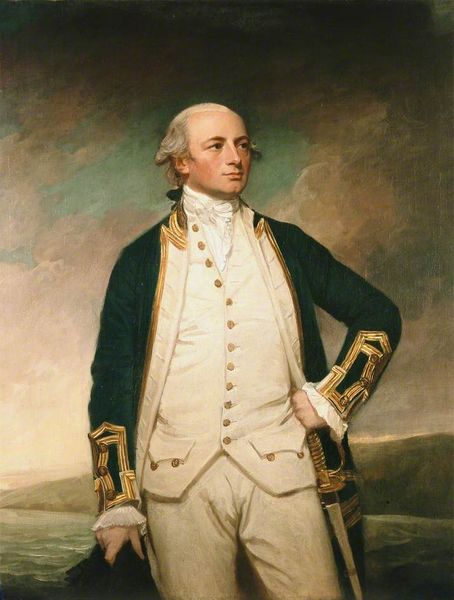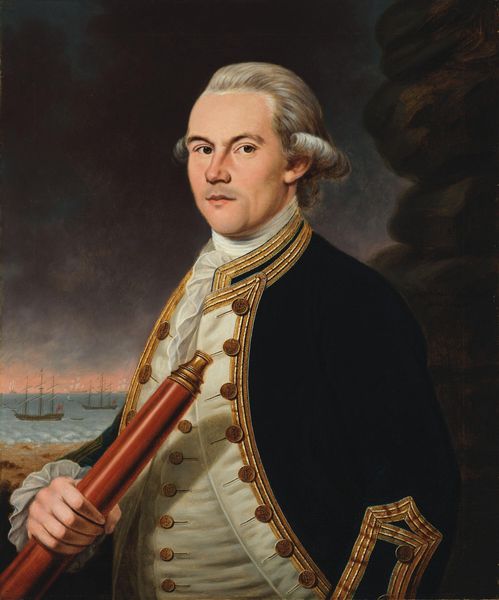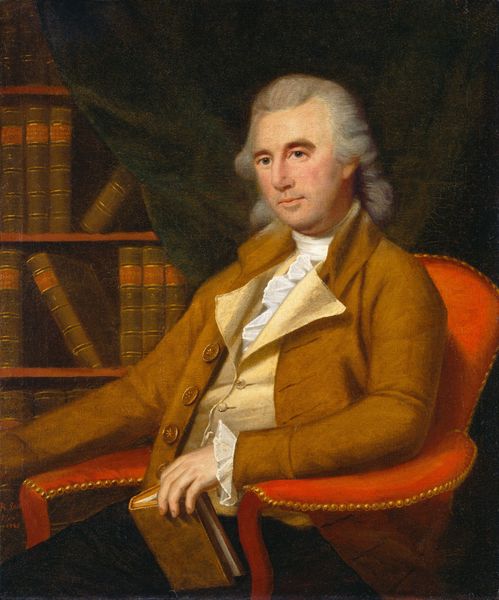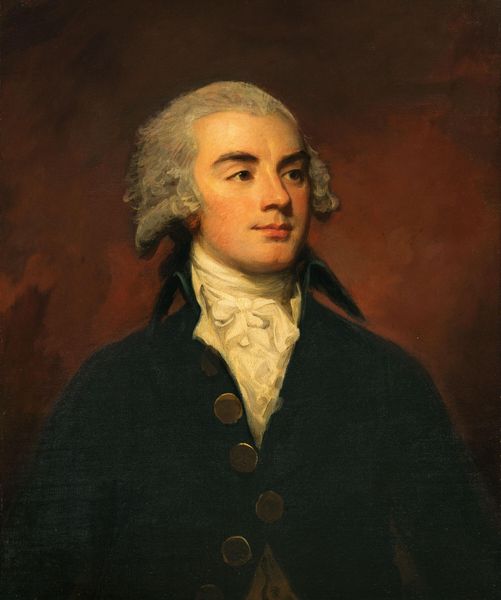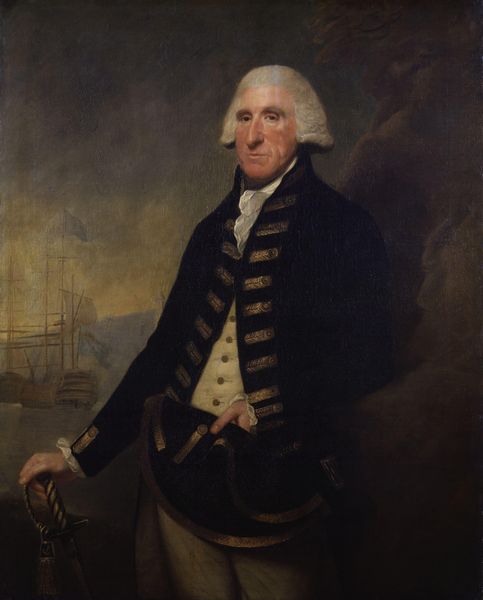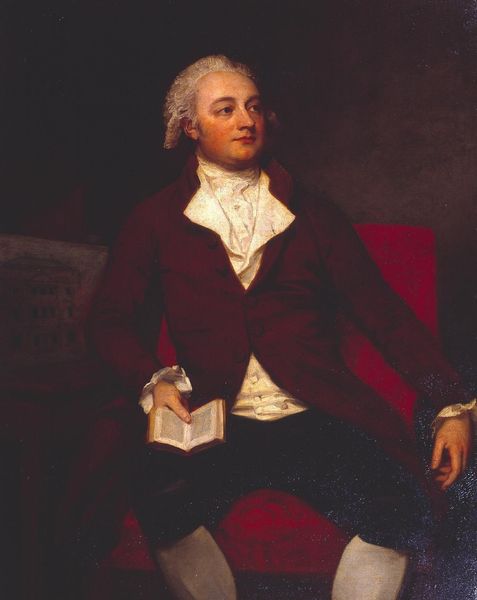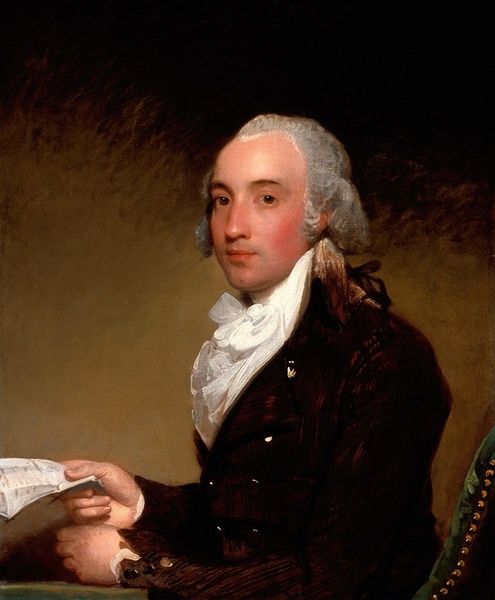
Copyright: Public Domain: Artvee
Curator: Here we have John Singleton Copley's 1764 portrait of Daniel Hubbard. A compelling example of Copley’s early mastery of portraiture. Editor: Oh, he's got that calm assurance, doesn’t he? Like a well-fed cat contemplating a nap. Very symmetrical, isn't it? Almost aggressively so. The controlled palette gives it a dignified sobriety. Curator: Absolutely. Copley was incredibly sought after by the Boston elite at the time. This portrait showcases his capacity to capture the character and status of the sitter. You'll notice the composition with Hubbard seated in a Chippendale chair and set against a draped background creates a scene of wealth. Editor: It’s a fascinating tension, though, isn't it? The almost smug pose is at odds with the kind eyes. It feels like Hubbard knows something you don't, and maybe that makes you question everything. It makes you question, what secrets are hidden beneath that perfectly powdered wig? Curator: It’s definitely meant to project confidence. Think of the era; it's just before the Revolution. Hubbard was a wealthy merchant—part of the fabric of colonial society—and Copley is presenting him as such. His clothing and the inclusion of the classical column in the background indicate this elevated social position. The small book also hints at his education. Editor: You are right; he's literally framed by his status, isn't he? Almost suffocated by it. That dark coat contrasted against the shining white silk of his waistcoat is dramatic, though, drawing your eye straight to his expression. I find I'm constantly drawn back to the small smile he has on his lips. There's a glimmer of personality beyond the stiff formality. Curator: Copley excelled at these subtleties. What is so compelling here is that he captures something of Hubbard’s inner character as well as representing his outward appearance. In representing a colonial leader like this, the painting affirms certain socio-political values that were so important at the time. Editor: He's more than just a symbol, I think, and maybe that's why it speaks to me. One gets the impression that behind the wig, the silk, and the calculated pose, Hubbard was, well, maybe even a little bit of a rogue! Curator: Ultimately, this portrait reveals much about artistic representation and the values of colonial society. Editor: Absolutely! I wonder if Daniel would chuckle to know we were pondering him so many years later.
Comments
No comments
Be the first to comment and join the conversation on the ultimate creative platform.
